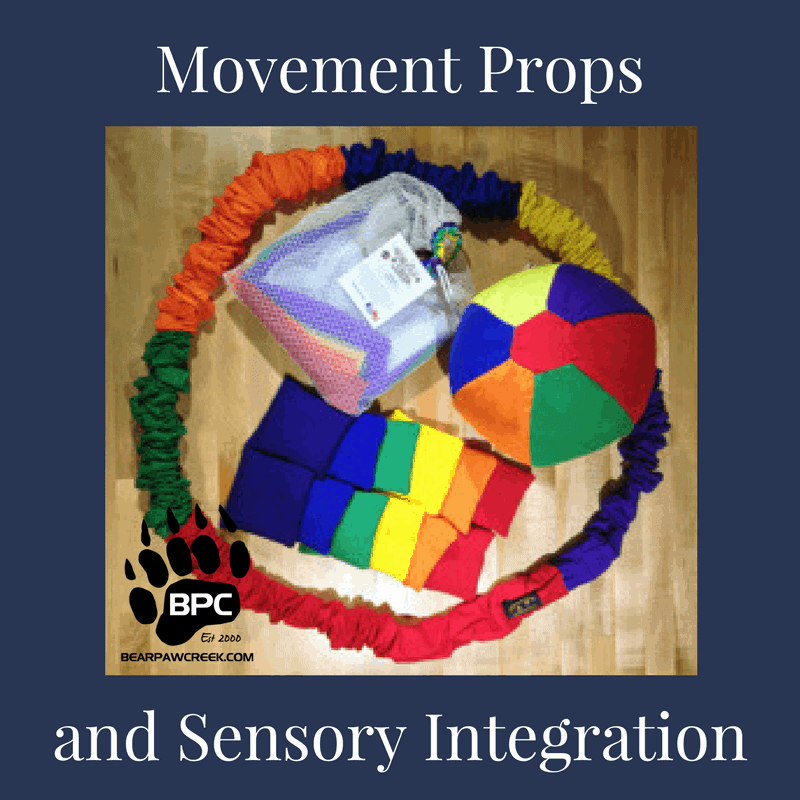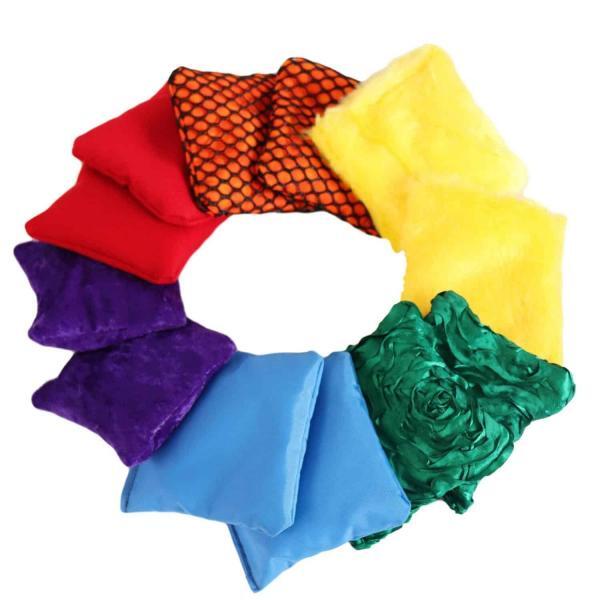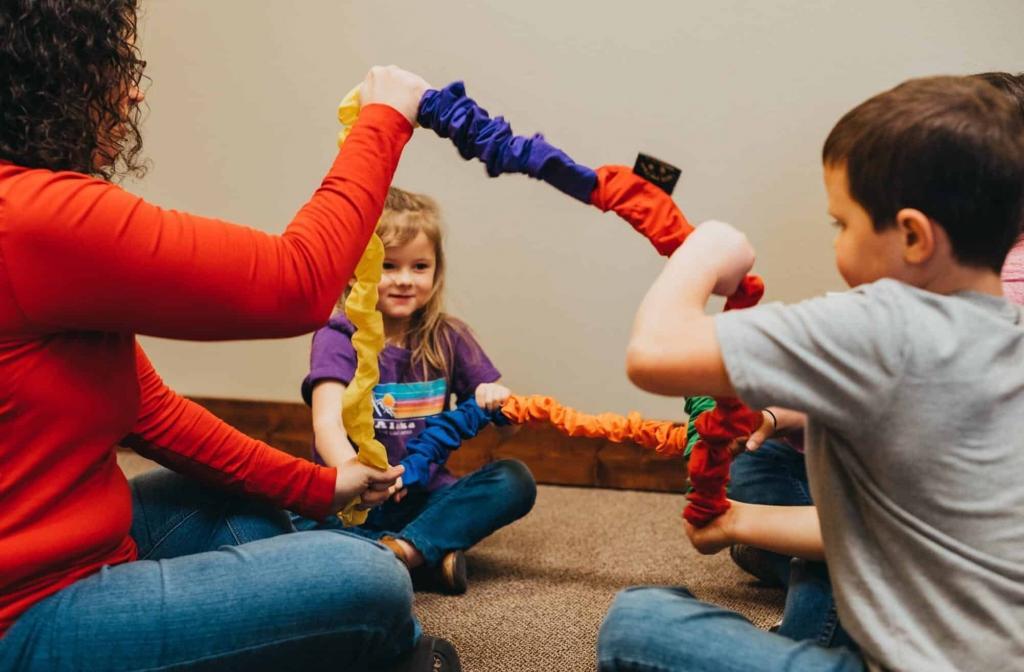Movement Props and Sensory Integration
With Winter lingering on for seemingly forever, tis the season for sensory dysregulation and cabin fever. Many of my clients get extra wiggly in sessions and groups this time of year. With the cold keeping us trapped inside, it can be difficult to get the sunlight and sensory input that our bodies crave. Luckily, Janet makes some of the best tools to help keep kids active and regulated through, what I think, is the worst stretch of the winter months.

Simple Sensory Rules
Figuring out how to best provide sensory input to children can be challenging, especially if you are learning it all on your own. Here are some guidelines on how to provide the best sensory experience.
- If it is not helping to regulate the child, it may not be the right sensory activity for them.
- After a vestibular activity, like rocking or spinning, provide a proprioceptive activity, like the wheel barrow walk or body squeezes.
- If you spin, always make sure to unspin in the opposite direction.
- Start with a large body activity, like jumping, and end with a small body activity, like using putty or play dough.
- Keep it simple and consistent!
Tactile Input – Touching or feeling
One of my favorite tactile tools to use in session are the Bear Paw Creek textured bean bags. With many different exteriors to the bean bag, there are opportunities for every tactile seeker to find a bean bag they like. I have shared in previous posts the ways I use these bean bags in session.

In addition to feeling textures and squishing the bean bag on the body that I mentioned in previous posts, I like to rub the bean bag on different body parts to provide a variety of tactile sensations and activate the mind-body connection. I use the song “Rub, rub, rub” to tell children where they are going to rub the textured bean bag on their body, in time with the music. I use this activity at the start of sessions to help get kids focused and engaged in the group! This song is featured on my Mini Musical Minds CD which has a variety of songs for sensorimotor skills, instrument play and more!
Movement Props to the Rescue with winter lingering on for seemingly forever, tis the season for sensory dysregulation and cabin fever Share on X
Auditory Input – Hearing
Bear Paw Creek has a variety of sensorimotor props, but Janet also sells wrist jingle bells. Jingle bells are one of my favorite auditory stimulating instruments. The sound is strong enough that it activates the auditory processing centers in the brain, but it is not too loud to cause dysregulation or distress. To work on auditory input and processing, I like to play a game called “I hear something playing”.
Children sit in a circle, each with jingle bells behind their back. I have children close their eyes and I walk around the outside of the circle and tap one child to be the instrument player. I then instruct children to open their eyes and I begin singing the words “I hear something playing” and the child I tapped to be the instrument player will shake their jingle bells softly behind their back. I continue to sing “I hear something playing” and see if the other children in the circle can identify where the sound is coming from. I ask “what can it be?” and “where can it be?”. Depending on how sneaky the instrument player is, it can take a few times before all the children can identify the sound source. You can also play this game with a variety of instruments and the children have to guess where the sound is coming from and what instrument is playing the sound.
Proprioceptive and Vestibular Input – Spinning, rocking, and jumping to feel where our body is in space
I have written many posts about the stretchy band and it is still my favorite sensorimotor prop to use in session. The reason why I love it so much is because it is so versatile! In the posts I mentioned above, I share several ideas to use the stretchy band for a variety of skills. Another way you can use the band to aid in sensory integration is through the inherent resistance of the stretchy band to help sway the body front, back, side to side, up and down, and all around.
I use a simple chant to help guide the direction of my clients when using the stretchy band for sensory integration. I sit on the floor with them and wrap one end of a small stretchy band around myself and one end around my client. I then start chanting “front and back, front and back, that’s how we go” and we move in time with the chant. I gently pull the client forward when I say “front” and they have to pull me and rock backwards when I say “back”. We repeat this idea on the verses “side to side” as well as “up and down”, moving the way the words tell us to move. To add more sensory input, you can stand with the client and add a verse such as “jump and jump” where they have to jump with the stretchy band and bounce it up and down.

I find that providing consistent sensory input is the number one way to improve overall attention in my sessions and minimize negative behaviors from my clients who have a difficult time controlling their body, especially in a group. Bear Paw Creek’s sensorimotor props make it easy and fun to make sensory integration activities for children of all ages and abilities!
On my blog, I’ve shared additional sensory tips and strategies you can use to keep your children, clients and students stay regulated through the last of the cold months. I hope these resources are helpful for you and the children in your life to stay active and engaged. A regulated child is a happy child, and that makes music groups so much more fun!

